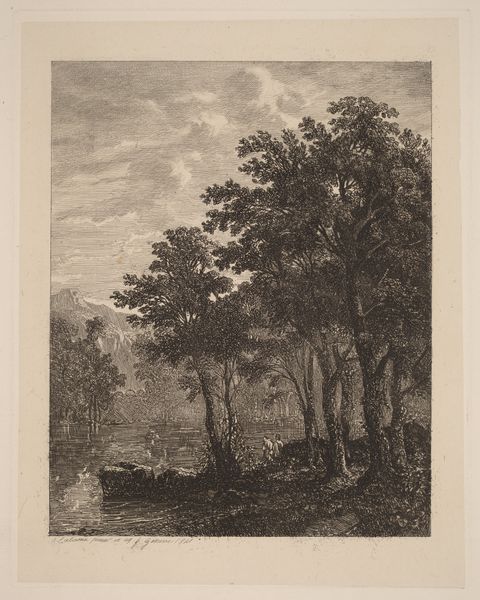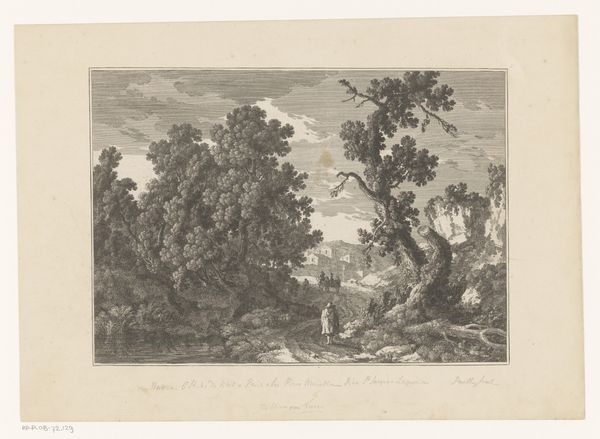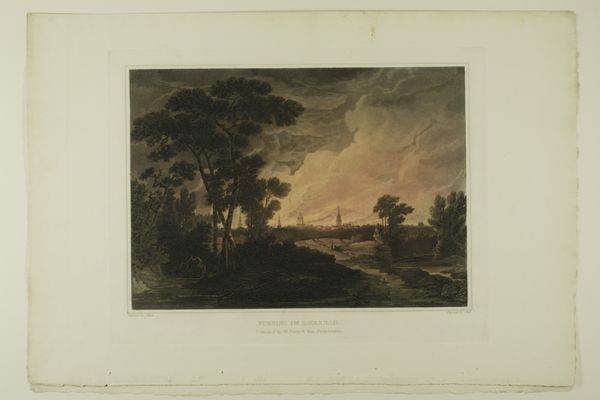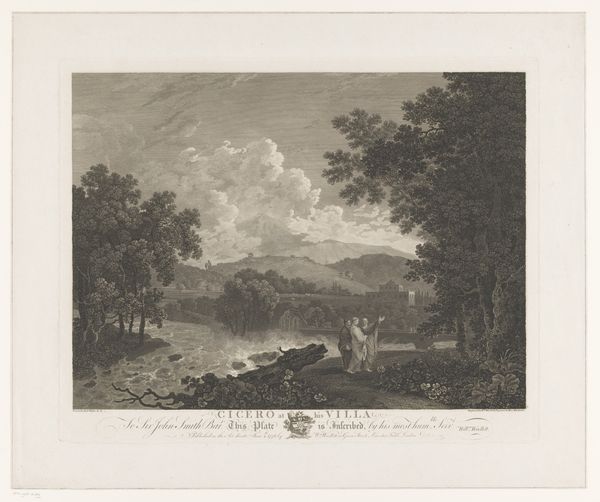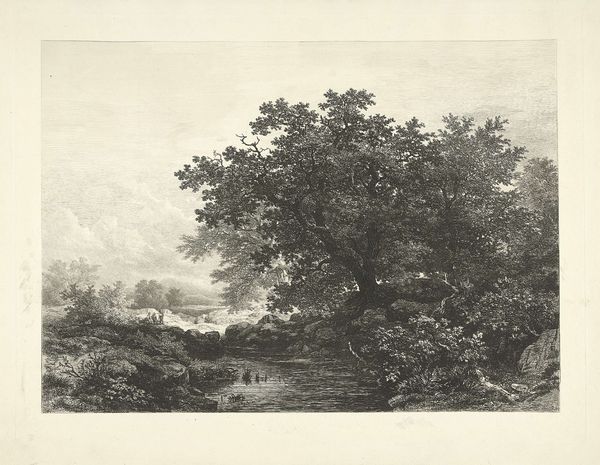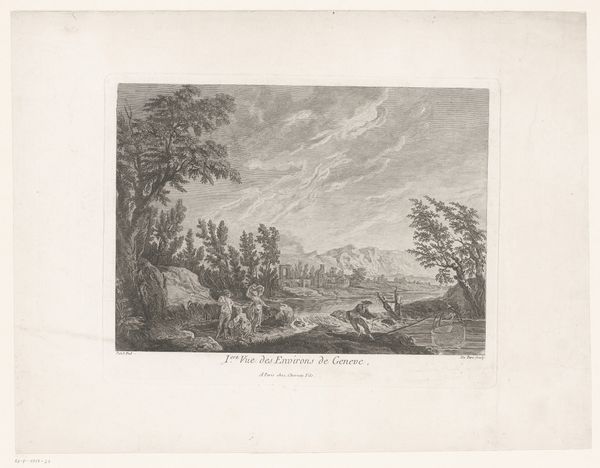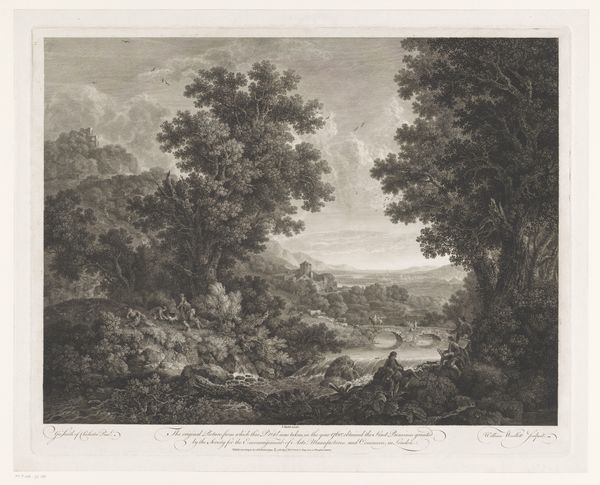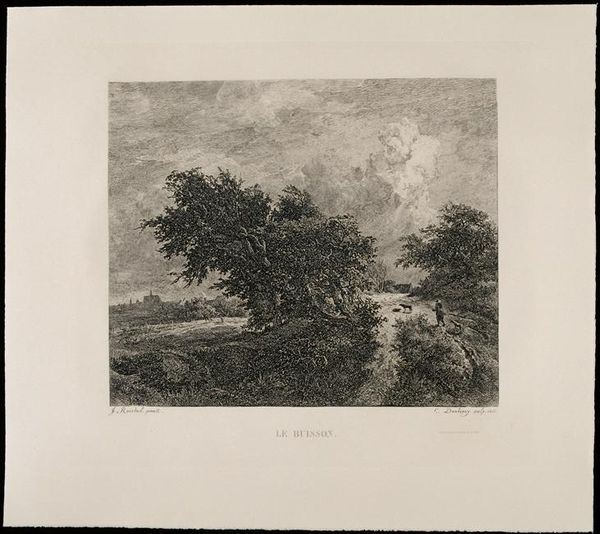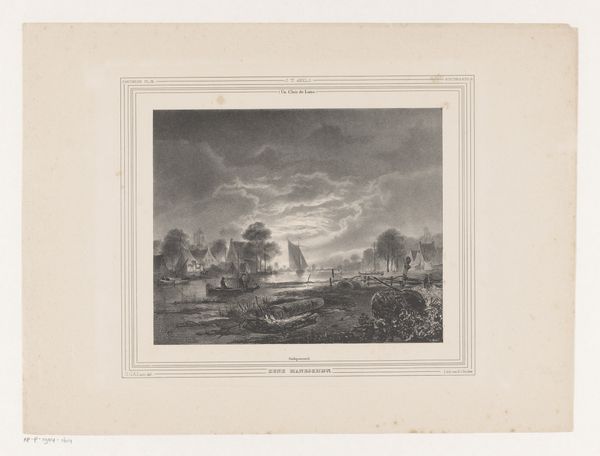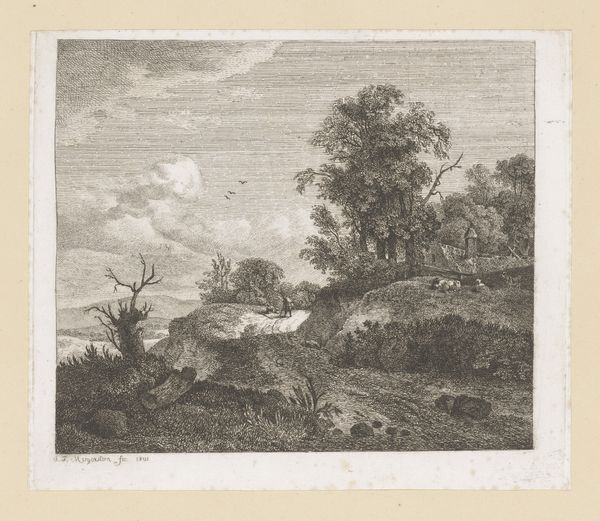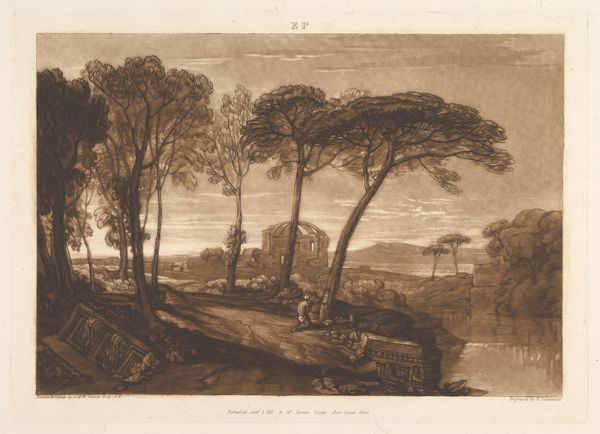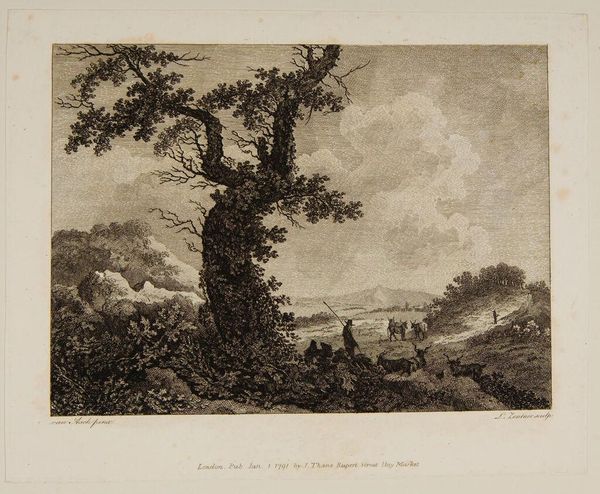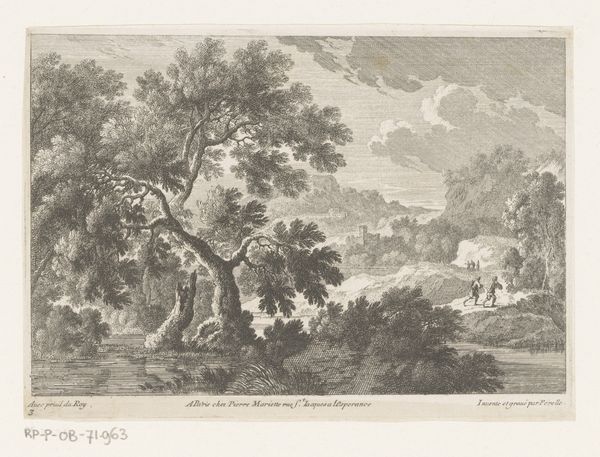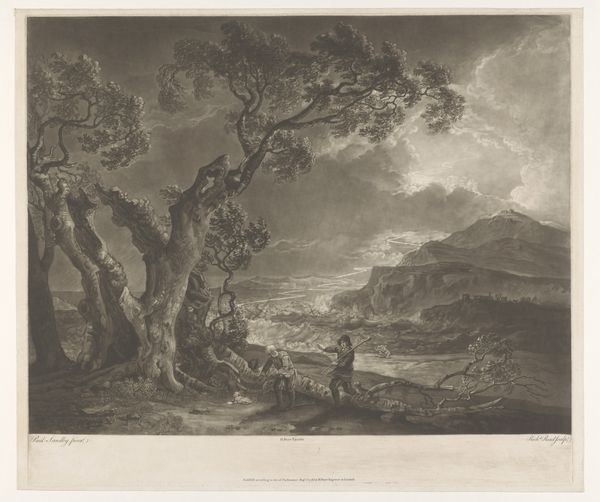
Dimensions: plate: 17 5/16 x 19 3/16 in. (43.9 x 48.8 cm)
Copyright: Public Domain
Editor: Charles-François Daubigny’s "Le Buisson," an etching from 1855, captures this windswept, almost melancholy scene. The light seems to be breaking through the clouds, highlighting the resilience of nature. How do you interpret this work? Curator: I see a landscape imbued with the spirit of resistance. Consider the historical context: the mid-19th century in France, a time of social and political upheaval. Daubigny, through his choice of subject and technique, elevates the ordinary. He presents not a grandiose historical event, but a simple bush. How might this reflect a quiet resistance against academic art and its emphasis on heroic narratives? Editor: So, the very act of depicting an ordinary scene becomes a statement? Curator: Precisely! The landscape itself can be seen as a space where identity is forged, especially in opposition to the rapid urbanization of the time. Nature, untamed and free, stands in contrast to the rigid structures of society. Do you see how the lone figure, almost camouflaged within the landscape, might further emphasize the interconnectedness of the individual and nature in this context? Editor: I do, it’s as if they're one with the environment, almost disappearing into it, and yet they are present. Curator: Exactly! It prompts us to think about class too. Consider, who had access to the countryside, to leisure, to this sort of experience of nature at this time? Daubigny makes it seem almost universal, but we must consider who is truly represented in such images and who is erased. Editor: That makes me see this piece with fresh eyes; I hadn't considered it in terms of social commentary before. Curator: Art offers possibilities of escape but may blind us too. Let's learn to look carefully, and interrogate closely, even the loveliest of scenes.
Comments
No comments
Be the first to comment and join the conversation on the ultimate creative platform.
